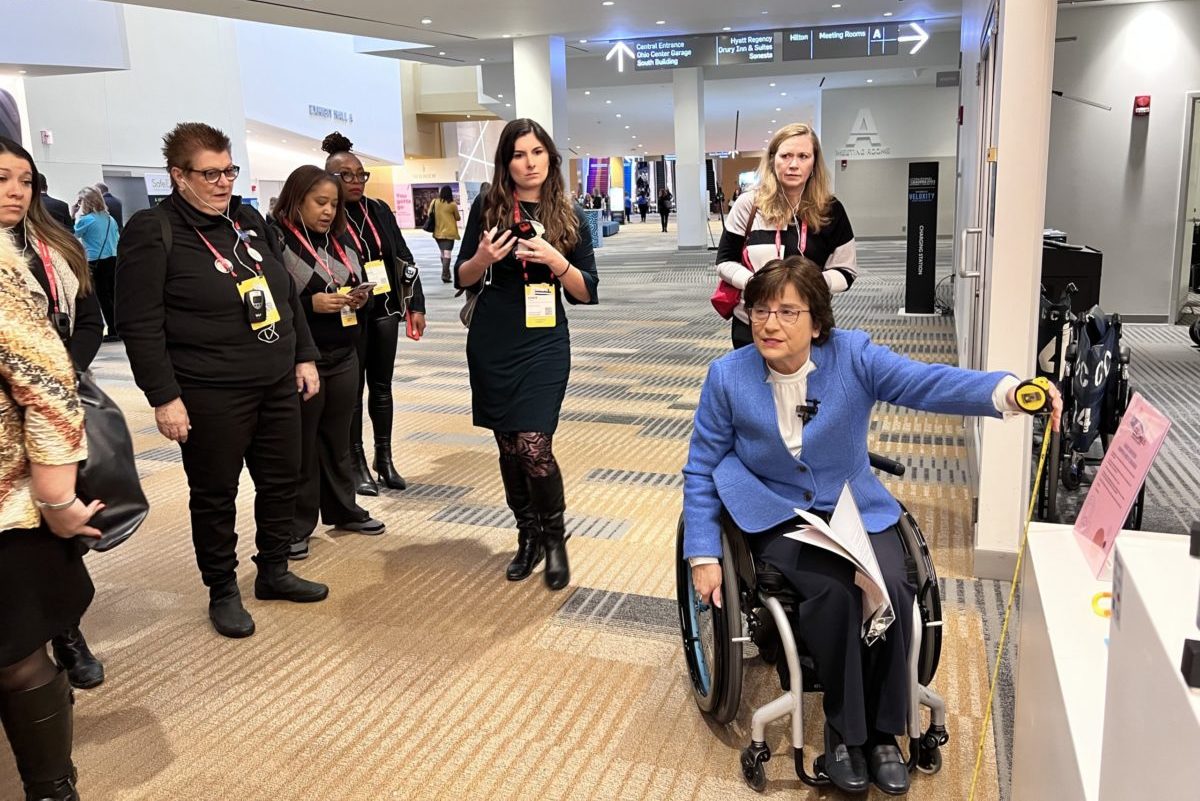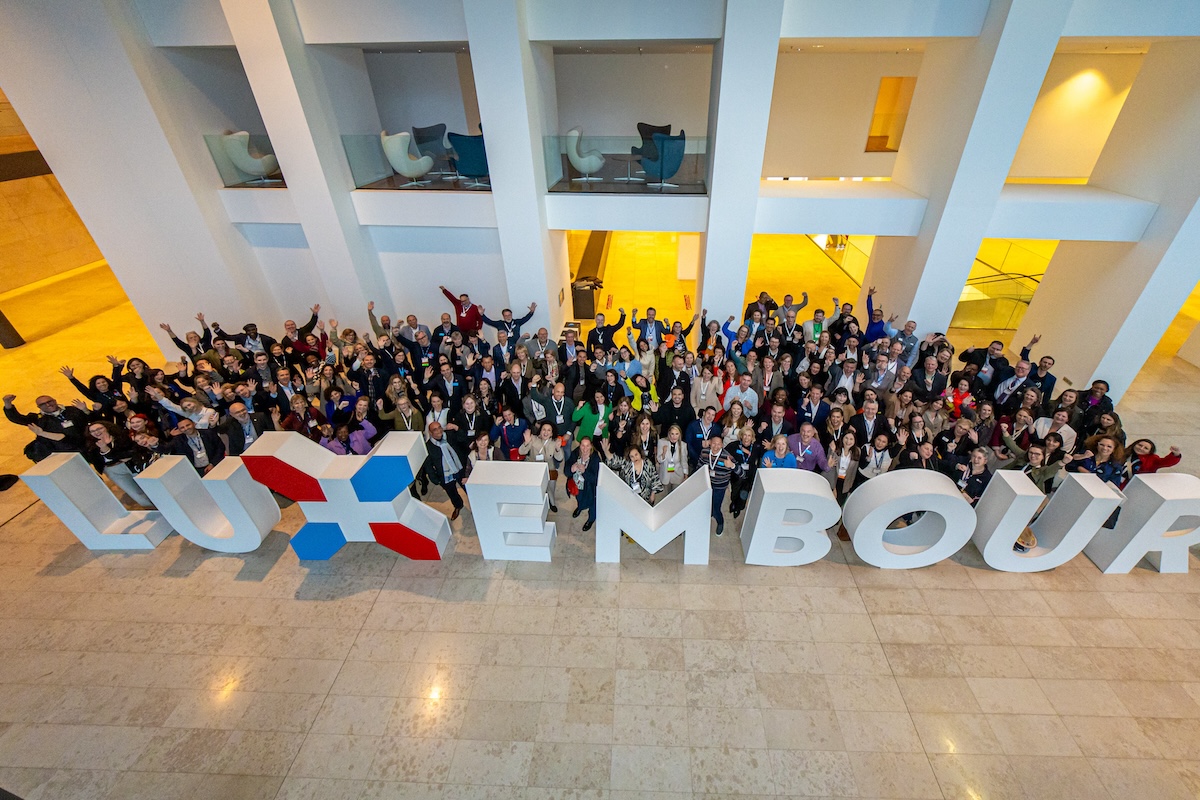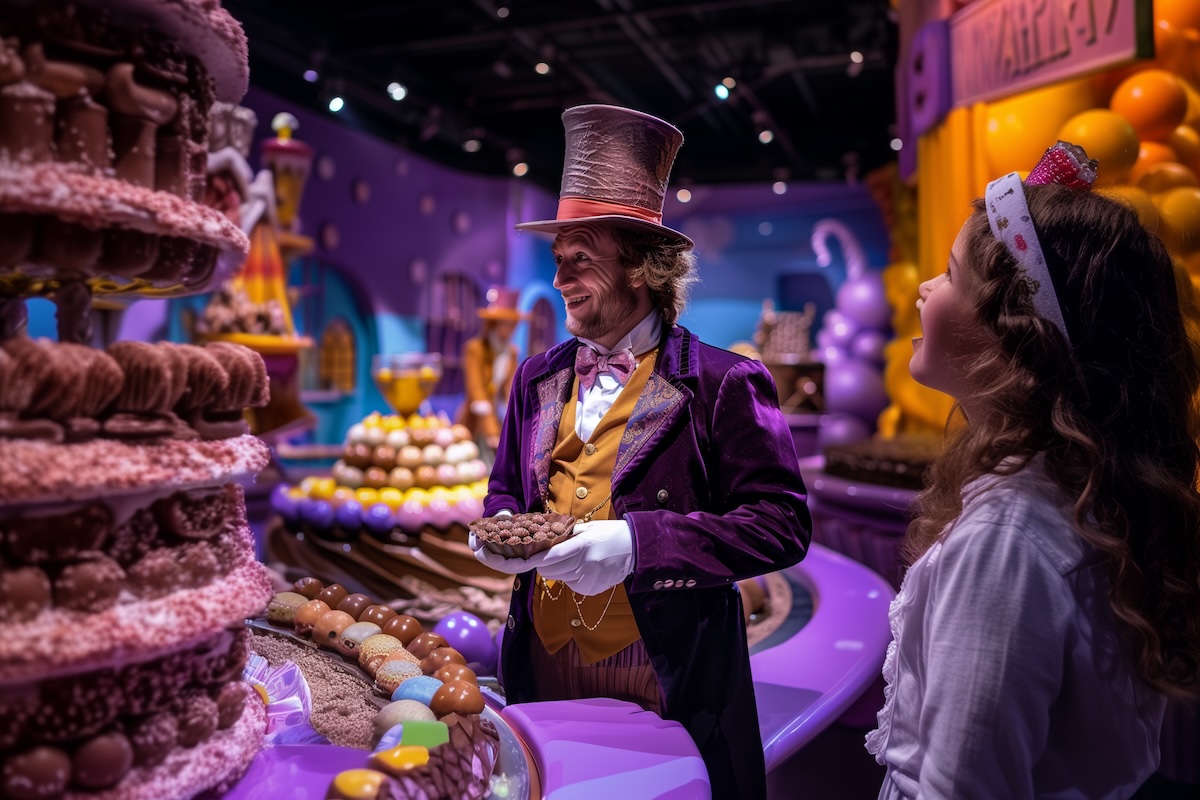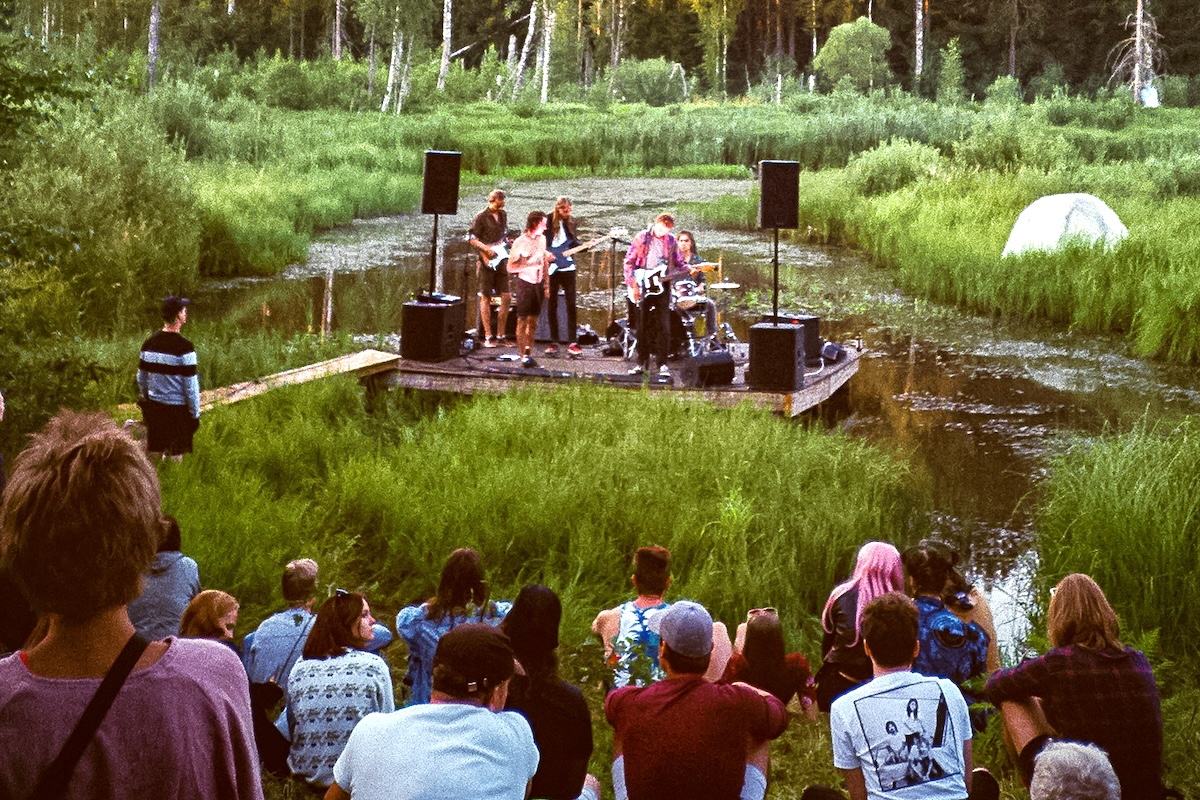Skift Take
Accessibility is a buzzword in the business events industry but is there a true effort to ensure all attendees, including people with disabilities, can participate?
At the Greater Columbus Convention Center (GCCC) the automatic doors, elevators, and doorways are the right size to be used for anyone using a wheelchair. There are adequate parking facilities and accessible restrooms — the GCCC gets it right when it comes to accessibility. This isn’t the case with all venues.
Recognizing what’s essential when designing events from a disabled person’s perspective was the focus of a tour led by accessible design and DEI expert Rosemarie Rossetti, who is paralyzed from the waist down due to a spinal cord injury. She led a group on a tour of the GCCC during PCMA 2023 Convening Leaders Conference on January 10, 2023.
Expectation Vs. Reality
Recently, Rossetti was part of a site visit for a March convention in Denver. They had booked her a wheelchair-accessible room, but when she entered, she realized there weren’t any grab bars.
“If a destination, convention center, or hotel says it is accessible, it is important to get details about what this means. Also, ask for photographs,” said Rossetti.
Knowing your attendees and what accommodations or services they may need is imperative. For instance, there was recently a convention in Columbus where many people were in wheelchairs. “The hotel had to tape off extra spaces near the entrance for drive-in accessible parking,” explained Rossetti.” “It is about knowing who your attendees are in advance and their needs.” In addition, the GCCC had to increase the number of scooters in its fleet for this particular group.
Lakshmee Lachhman-Persad, founder of AccessibleTravelNYC.com, which showcases accessible features around New York City for tourism purposes, is on the board of the New York PCMA chapter. She attended PCMA Convening Leaders in Columbus and was part of Rossetti’s tour.
“It was great to see this offered as it raises the profile of accessibility and disability inclusion during a major convention like PCMA,” said Lachhman-Persad.
She stresses that not all disabilities are visible. In her case, she lives with vertigo, hearing loss, and chronic pain.
Responding to Actual Needs
In the registration form for PCMA Convening Leaders, there was a section that asked, “How can we make the experience more comfortable for you?” Lachhman-Persad explained her needs and asked for a quiet space. “I didn’t get any follow-up from anyone regarding this,” she said. “I had to find the quiet spaces in the convention center on my own.”
This shouldn’t have been the case. “A situation like this makes you feel really included or not if your access needs are taken into consideration. Disabilities are part of our natural human diversity, and in the year 2023, are not something to hide,” said Lachhman-Persad. “There are accommodations I need to have an enjoyable event.”
She adds that there is a misconception that these accommodations are costly. “In most cases, they are not. In my case, it’s simply providing information and if you’re asking attendees for their access needs, be sure to follow up,” adds Lachhman-Persad. “I require accommodations to fully participate in an enjoyable event, and all I need to know is where are the quiet spaces.”
The opening night party was an extravaganza featuring the four seasons in Columbus, with each season showcasing its own band. Not only did the noise level make it difficult to conduct a conversation, but it was overwhelming for some.
Lachhman-Persad appreciated that there wasn’t a carpet during this party as certain patterns appear three-dimensional to her, triggering her vertigo. Rossetti also made note of it, as some carpeting is difficult to navigate with a wheelchair.
Best Practice
Columbus prides itself as a city that is accessible to all. It recently launched an accessibility guide with more than 20 attractions, restaurants, hotels, and transportation options reviewed and screened by disability inclusion experts, including Rossetti.
In her tour, Rossetti pointed out where the family care lounge and universal changing table were located. Many meeting planners admitted they never thought of the importance of a changing table for adults but will now include this in their RFPs.
Food stations are another area to be aware of from an accessibility viewpoint. Not only should all ingredients be labeled for those with food allergies, but it should be accessible for those in wheelchairs. Plus, if you offer seating at high-tops, be sure there are 30-inch-high tables for people who use wheelchairs.
Other areas Rossetti pointed out during her tour included:
- Breakout and general session rooms with areas with no seats for scooters and wheelchairs and reserved seating for people with disabilities who request to sit up front. Volunteers to assist in locating seating.
- Restrooms with accessible power-operated entry doors, sinks with knee space underneath at 30-inch-high counters, and accessible stalls. No added scents anywhere.
- Networking areas with various table heights, including 30-inch-high, chairs throughout the area, and some with armrests.
- Mother’s nursing room that is wheelchair accessible.
- Registration desk with a 30-inch-high counter section.





